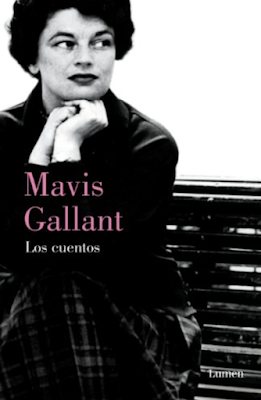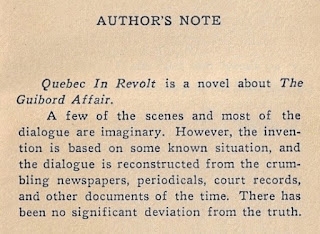This Suitcase is Going to Explode
Tom Ardies
Calabasas, CA: Brash Books, 2021
220 pages
Of all the books I've read in 2021,
This Suitcase is Going to Explode has the best title by far. It follows
Their Man in the White House as the second novel to feature journalist and sometime secret agent Charlie Sparrow. Our hero wasn't doing so well at the end of that first adventure. Had Sparrow been institutionalized? I don't quite remember. What I can say with certainty is that he was in a very bad place. The woman he loved had been killed and a man he knew to be a Russian plant had been elected President of the United States.
This Suitcase is Going to Explode opens with Sparrow back working for Morley, the head of CI-2, a secret American intelligence agency. Both are in a darkened room watching poorly edited surveillance footage of a frail, elderly man wandering slowly about the streets of Washington, DC. Where Sparrow sees a tourist, Morley sees a threat.
The old man is a German nuclear scientist by the name of Erik R. Schuler. In 1942, Morley was involved in a risky effort to steal Schuler away from the Nazis. Make no mistake, the scientist wanted escape. Schuler so hated Nazi Germany that he risked his life to join the Americans in the race to build the first atomic bomb. With the German surrender in May of 1945, Schuler breathed a sigh of relief, believing that he'd worked on a weapon that would never be used.
Then came Hiroshima.
Then came Nagasaki.
And then, after writing a letter condemning the United States for its use of the bomb, Schuler disappeared. The missing scientist's name was quickly scrubbed from the history of the Manhattan Project. Morley didn't know if Schuler was alive or dead until the footage arrived on his desk. What's most disconcerting is that neither he nor the agency has any idea who sent it.
English, the first assigned to find Schuler, is assumed to have had a live grenade shoved up his rectum. It looks that way. Sparrow has much better luck in that he not only tracks down the scientist, but manages to bring him in – alive – to the Washington mansion Morley is using as a front.
Schuler proves to be a confused old man whose actions are prompted by instructions received through an earpiece. He isn't all there, yet manages to relay with clarity that suitcases containing nuclear bombs have been placed in cities throughout the United States. Did Schuler, have something to do with these devices? He says not, but when questioned further appears to have forgotten about them entirely. Scars suggest he's had a bilateral temporal lobectomy.
I enjoyed This Suitcase is Going to Explode even more than Their Man in the White House. The writing is tighter and the novel has a greater reliance on dialogue.
I do like dialogue.
Interviews at time of publication have Ardies describing his Sparrow thrillers as something of a lark. Perhaps they were. There's certainly a good amount of fun to be had in the reading. Early on, Sparrow is tasked with driving home Volrich, an egghead who's been probing Dr Schuler's damaged brain:
Volrich raised his newly acquired pistol and sighted down the barrel. His finger tightened on the trigger and he began chanting out a deliberate count. "One... two... three..."
Is that thing loaded?" I asked.
"Of course," Volrich said. "I thought that was one of the rules. 'You'll never kill anyone with an empty gun.'" His eye moved back to the gunsight. "Four... five...
"Is it? I haven't looked in the rulebook lately." "Your problem," Volrich said. "One of your many problems..." He closed his eyes and squeezed as hard as he could. The hammer clicked on an empty chamber. "How long does it take to kill a man?"
We had about a minute more to wait. I took a last drag and stubbed out my cigarette. "It all depends. But, I'll tell you one thing. You just took too long."
I made a point of tracking down the recording...
...and listening to it as I read the rest of the scene. As the Magic Violins play, we get several more pages of their exchange, beginning with this:
"You may need the gun, " I said the. "The best idea is not to think about it. If you take time to think it will be too late."
Volrich removed his pipe. The stem made a small circular motion. "With all this protection..."
"It could happen, I said. "So don't count, huh? Don't think at all..."
He looked at me with disgust.
You just know Volrich is going to die.
I prefer The Magic Violins' A Night at the Villa Fontana myself, but that has everything to do with the cover.
Having come to know Sparrow through Their Man in the White House and This Suitcase is Going to Explode, I'm betting he would agree. He appears for the last time in the 1973 thriller Pandemic.
I'm looking forward to getting to know him even better.
Object and Access: An attractive trade-sized paperback, the Brash Books edition is the first in 45 years. It was sent to me by the publisher, along with three other Ardies reissues. Having now read the novel – I'd never encountered a copy of a previous edition – I'm happy to add it to my collection.
This Suitcase is Going to Explode was first published in 1972 by McClelland & Stewart (Canada) and Doubleday (United States). Two years later, PaperJacks and Panther published Canadian and UK mass market editions. Curiously, it wasn't until 1976 that Fawcett issued the first American mass market. The publisher made up for the tardiness with
a really cool hologram cover (right).
Used copies of Doubleday's American first are being offered online at prices ranging from US$3.00 to US$10.45, but all look to be in rotten shape. The much more common Fawcett is more expensive – something to do with that hologram cover, I expect. Decent copies hover in the ten to twenty dollar range, though some booksellers are asking for much more. Some joker in Florida wants US$100.94 for a 46-year-old copy he claims is "Brand New!"
The McClelland & Stewart, PaperJacks and Panther editions are nowhere in sight, though I once managed of capture this petite screenshot of the elusive PaperJacks edition:
Reminds me of Logan's Run.
My advice is to purchase the Brash Books edition.
A French translation, Une valise qui explose, was published in 1973 by Hachette. Are we to assume the nuclear weapon was retrieved from a baggage carousel?
Library and Archives Canada, the Toronto Public Library, and sixteen of our universities hold copies. Sadly, the Vancouver Public Library – its main branch, just a short walk from the
Vancouver Sun, at which Ardies worked – hasn't one copy of his twelve novels.
This Suitcase is Going to Explode is more common south of the border, I was interested to discover that those serving at the White Sands Missile Range in New Mexico will find it in their library.
No Canadian library has a copy of
Une valise qui explose.























































